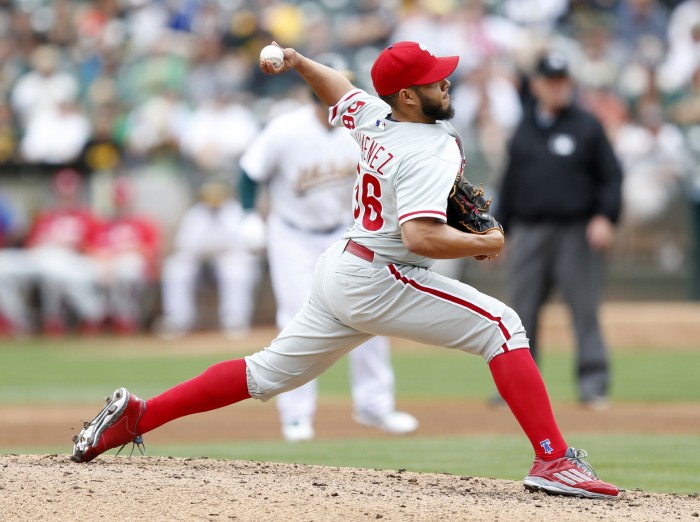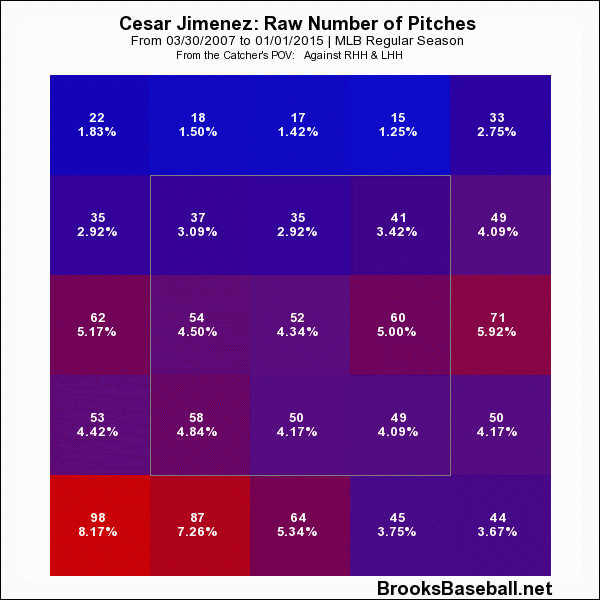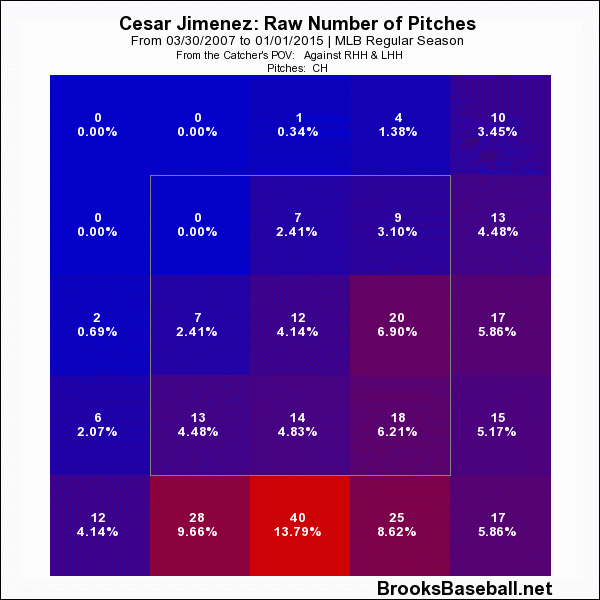For teams who will not play on to October, the season’s final month can still serve a purpose. Clubs such as the Brewers, languishing near the bottom of the standings (albeit not quite in the cellar*), will often take the opportunity to experiment with younger and/or newer faces. When the games don’t count for anything except draft order, you can run out a Zach Davies or a Domingo Santana and see how he performs. If he excels, then you have a starter for next year; if he blows, well, you haven’t lost anything in trying.
*As Dan Szymborski noted on Twitter, Cincinnati (the team that does occupy the cellar) has for some reason taken the opposite route.
Davies and Santana, however, are prospects, and fairly esteemed ones too. Milwaukee clearly has them in its future plans regardless of how they perform in the weeks to come. By contrast, someone like Cesar Jimenez — a no-name 30-year-old reliever picked up off waivers — doesn’t have any security. If the team deploys him in high-leverage situations and he implodes, he’ll return to the waiver wire, a long-forgotten name in the bowels of history. Should he manage to come out unscathed, he could remain a Brewer in 2016.
That’s all a roundabout way of saying that, in 10.1 innings this season, Jimenez has done quite well. He hasn’t allowed a run, and his -0.36 (wow) DRA reflects that. Not only has he exceeded expectations to this point, but his 86 cFIP also indicates that he could continue to do so. For a player with a DRA of 4.53 across his major-league tenure, this looks somewhat suspicious. The fact that Jimenez has changed his strategy in several ways counteracts this doubt and, perhaps, gives him a shot at staying with the team in some capacity.
Overall, Jimenez has certainly shifted his location. Every pitch in his arsenal has hit the catcher’s glove lower than ever before:
As the result of that, Jimenez’s ground-ball rates have surged on all four pitches, and he’s posted a 56 percent rate overall ground-ball rate (much higher than his career clip of 41 percent). But placing the ball differently doesn’t account for all of his improvement, as he’s also tweaked his pitch usage.
Before this year, Jimenez threw his sinker for a meager 4.2 percent of his pitches, a level that he’s ratcheted up to 28.0 percent in his current work. While the pitch has led to more grounders this year, it’s also historically induced quite a few swings-and-misses. Its overall whiff rate of 9.4 percent handily surpasses the 5.6 percent standard for such pitches. The sinker’s unconventional movement gives it this deception:
| Category | Jimenez Sinker | MLB Sinker |
|---|---|---|
| Velocity (MPH) | 89.3 | 90.8 |
| HMovement (inches) | 9.3 | 4.3 |
| VMovement (inches) | 7.7 | 4.8 |
Even though Jimenez’s sinker lacks adequate velocity, it dives and dances in a manner that few others of its kind can. He’s simply never taken advantage of it before now, and his decision to do so has helped him to succeed.
One other pitch has backed up the sinker: a superb changeup. How dominant is the latter offering? Not only has it given Jimenez 2.5 runs above an average such pitch in 2015 (and 10.4 runs for his career), Felix Hernandez — the guy who does this — picked his cambio up from Jimenez:
The experiment started at spring training in 2009. Most mornings Hernandez played catch with Cesar Jimenez, a fellow Venezuelan, who encouraged Hernandez to fiddle with his grip. Then one day it happened: He took the index finger and thumb on his right hand and made them into a circle, positioned his middle finger inside the two seams and—magic. That the grip felt right was one thing. The way the ball moved, and how dramatically? That was something else. “Use that,” Jimenez told Hernandez. “You’ll be unstoppable.”
The changeup owes a fair amount of its superiority to Jimenez’s sinker. Josh Kalk’s research has illustrated that a larger disparity in velocity between a pitcher’s hard pitches and his changeup will allow the latter to perform better. Because Jimenez’s average changeup has historically traveled at 79.6 MPH, he possesses a sinker-changeup velocity gap of 9.8 MPH, a good two units over the MLB average. That, coupled with the changeup’s knee-bending break (it moves 8.9 inches horizontally, compared to 1.6 inches for a standard changeup), makes it a force.
This year, however, the changeup has improved further for Jimenez. Its strike rate and swinging-strike rate have both gone from excellent to otherworldly, at the same time that he’s relied upon it more often:
| Year(s) | Usage% | Strike% | SwStr% |
|---|---|---|---|
| 2015 | 33.6% | 76.2% | 23.8% |
| All | 25.1% | 67.8% | 18.7% |
Jimenez has made the changeup his out pitch — he implements it for nearly half of his pitches with two strikes — and these peripherals certainly justify that. Additionally, it would seem that Jimenez now commands the changeup better than ever before:
Avoiding the plate and working mainly low, Jimenez has taken his changeup — as well as his game — to another echelon.
Jimenez still doesn’t have the track record that many teams like to see in their setup man, and his prosperity to this point has occurred in a minuscule sample. He also has the misfortune of pitching for a team with a plethora of quality relievers. The pieces for success have nevertheless presented themselves, and hopefully Jimenez will receive more opportunities to show them off. He’ll probably allow a run, and in all likelihood his DRA will rise to a more human level, but he could serve the Brewers well in some capacity.
As 2015 draws to a close, we’ll see more action from the Brewers of the future. The organization’s trades have rejuvenated its farm system and given fans several tantalizing young players to watch. With that said, the focus on youth shouldn’t overshadow the relatively unproven veterans that accompany them, especially if said veterans can provide value too.


